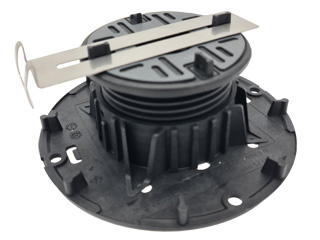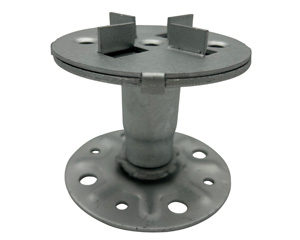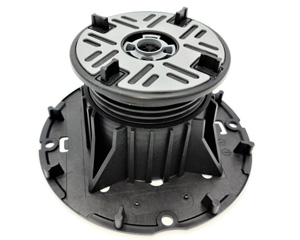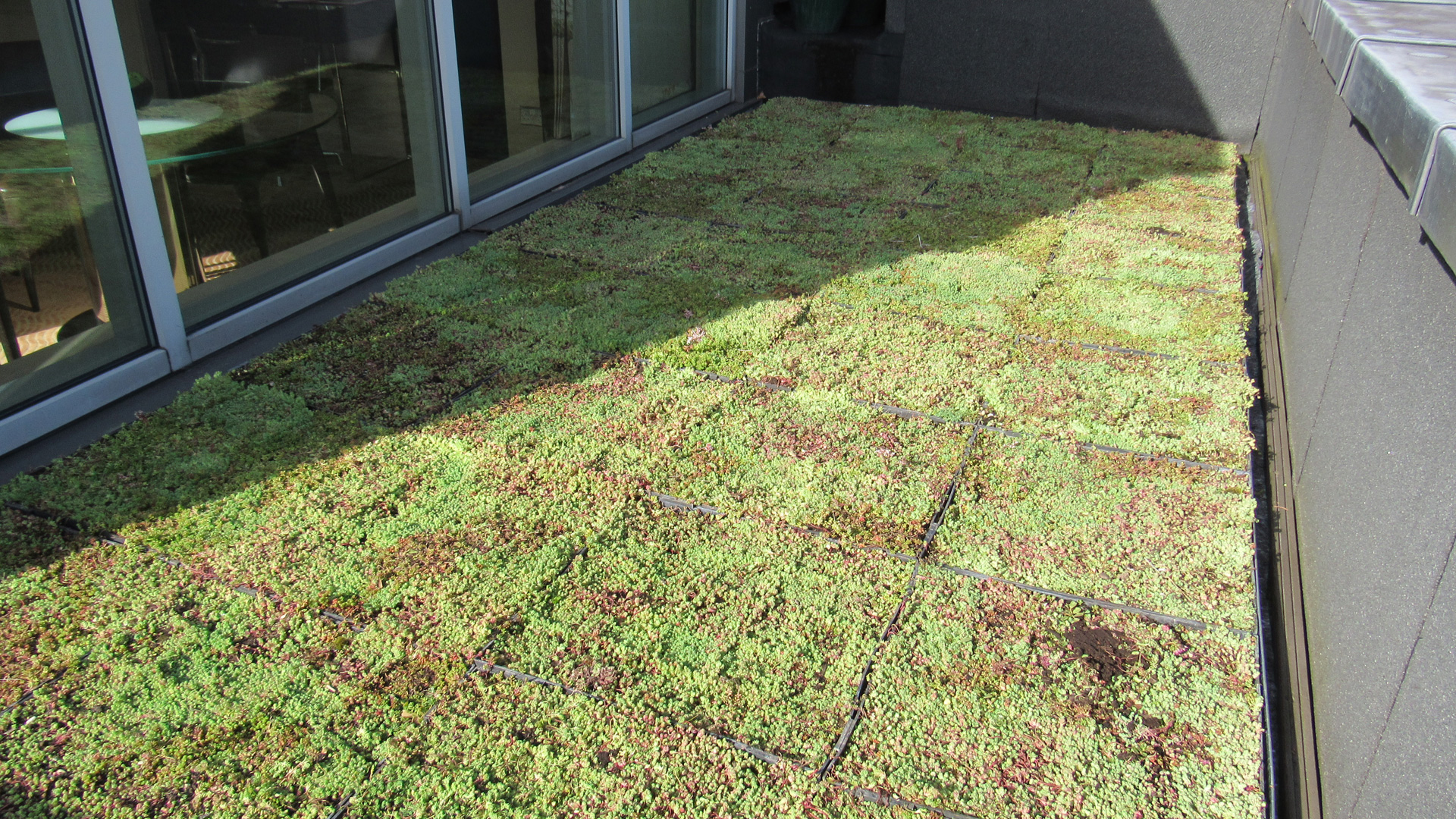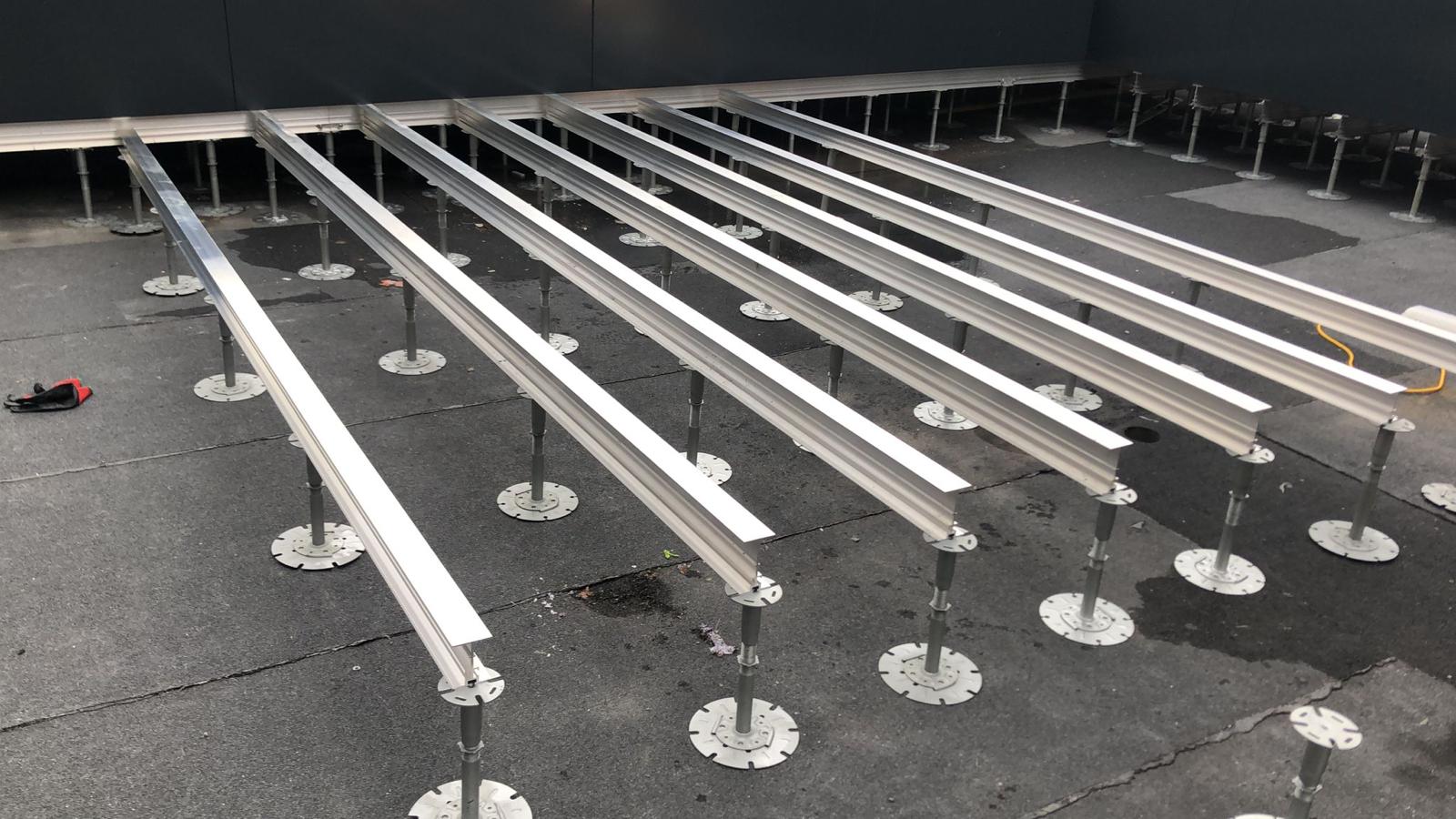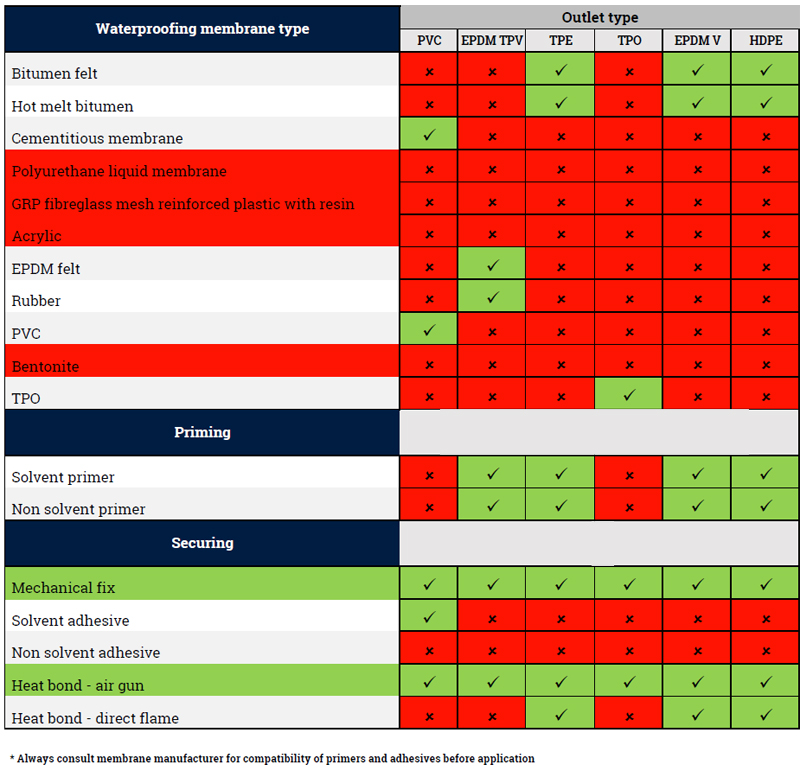By using suspended Wallbarn hardwood decking tiles, installers combine the natural, attractive finish of timber decking with the speed and ease of laying paving slabs.
Traditionally laying timber decking directly onto these deck surfaces led to additional costs of employing specialist carpenters. Laying timber joists directly onto the waterproofing membrane also risked damage over time. Wallbarn hardwood decking tiles offer the ideal solution. The weight of the tile will hold the system in place.
This suspended system avoids having to fix anything onto the deck and lifts all the timber away from any standing water, avoiding the dangers of a slippery surface.
As everything is free-standing, the tiles can be taken up and replaced without disrupting the whole area, should the deck need to be inspected. Unsightly items such as drainage outlets, cables and pipes can be hidden beneath the tiles and accessed easily.
Achieving Stunning Finishes
Stunning finishes can be achieved. The tiles can be laid in a straight line pattern or in a “chessboard” style, depending on the client’s wishes. We have a range of different timber available sourced from South America, chosen for their beauty and durability including Ipe and Cumaru.
For more on our range of hardwood timber decking tiles, please click here.
Ideal for ultra-low thresholds
- Our tiles are just 30mm in height which means combined with our 7mm fixed height pedestal you can deck up to a threshold as low as 37mm
- Traditional decking methods using timber joists, even if suspended on a super-low support pad, will only allow you to deck up to a threshold of 130mm or higher
Just like laying slabs
- Uniform size and space between decking
- Unsightly items such as drainage outlets, cables and pipes are hidden beneath the tiles
- Tile weight holds them in place
- No need to fix anything to the deck
- Futureproofed: take up a tile to inspect your deck with minimal disruption


